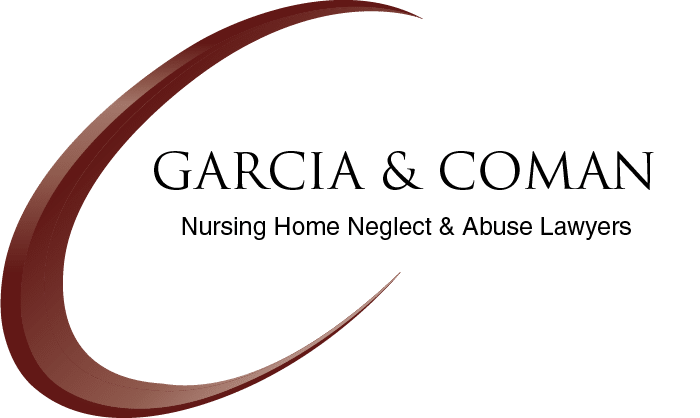
NO RECOVERY NO FEE Free Case Review
Delayed Treatment of Stroke Lawyers
Strong advocacy for victims and families when medical care for strokes is delayed
Strokes are a major cause of death in almost every US state. Survivors of strokes may lose their ability to talk, walk, and remember. Many stroke victims require continual care that only a nursing home or a long-term care facility can provide. Hospitals, nursing homes, and other long-term care facilities all need to understand the symptoms and all need to have plans in place to ensure any senior who is having a stroke receives prompt treatment. Just a short delay can be deadly. At Garcia & Coman, our delayed stroke lawyers work with medical specialists who can show how delays in treatment were fatal or caused much more harm than timely treatment would have caused. Call us now to discuss your rights.
NO RECOVERY NO FEE Free Case Review
How can we help?

What is a stroke?
The two types of strokes, according to Johns Hopkins University are:
- Ischemic strokes. These strokes happen when the blood flow to the brain is limited due to a clogged or blocked blood vessel. Ischemic strokes are divided into two categories:
- Thrombotic strokes. “These are caused by a blood clot that develops in the blood vessels inside the brain.”
- Embolic strokes. “These are caused by a blood clot or plaque debris that develops elsewhere in the body and then travels to one of the blood vessels in the brain through the bloodstream.”
- Hemorrhagic strokes. These strokes happen when a blood vessel that supplies the brain ruptures and bleeds. Hemorrhagic strokes are categorized as:
- Intracerebral hemorrhage. Bleeding occurs from the blood vessels inside the brain.
- Subarachnoid hemorrhage. Bleeding is in the subarachnoid space - the area between the brain and the membranes that cover the brain.
According to the Mayo Clinic, an ischemic stroke occurs when brain tissue doesn’t get the oxygen and nutrients the tissue needs because the supply of blood to the heart is interrupted or reduced. Brain cells can start to die in minutes. Prompt treatment is critical to reduce the amount of brain damage, prevent complications such as paralysis and cognitive impairment, and prevent death. The good news is that with prompt and effective diagnosis and treatment lives, are saved and patients are less likely to be disabled.
According to the US Centers for Disease Control and Prevention (CDC), in 2021, 1 in 6 deaths from cardiovascular disease were due to a stroke. Nearly 800,000 people have strokes every year and about 200,000 of them have had a prior stroke. At Garcia & Coman, our delayed stroke lawyers work with medical specialists who can show how delays in treatment were fatal or caused much more harm than timely treatment would have caused. Call us now to discuss your rights.
What are the signs and symptoms of a stroke?
According to Healthline, a common stroke symptom is a strong and sudden headache as compared to heart attacks where the most common symptom is chest pain.
Other symptoms of a stroke, according to the Mayo Clinic are:
- Difficulty speaking and difficulty understanding what others are saying. Additional symptoms include slurred speech and confusion.
- Paralysis or numbness of the arm, leg, or face. Paralysis or numbness often only affects one side. One side of the mouth may droop if the person tries to smile.
- Vision difficulties. One or both eyes may be blurry or the vision may be blackened. Double vision is another symptom.
- Difficulty walking. Dizziness and lack of balance are additional symptoms.
Some of the risk factors for strokes and heart attacks are high cholesterol, high blood pressure, family history, smoking, being overweight, being physically inactive, and age.
The Mayo Clinic states that anyone 55 and older has an increased risk of a stroke.
Complications from strokes
Stroke complications include paralysis, loss of muscle movement, difficulty tasting or swallowing, difficult communication and reading, memory loss, difficulty thinking, emotional difficulties including depression, physical pain such as tingling in an arm or loss of feeling in an arm, becoming withdrawn, and difficulty with grooming. Many stroke victims require long-term medical care.

Why is prompt diagnosis and treatment for a stroke essential?
Physicians who observe or suspect a senior has had a stroke will conduct physical tests, take a medical history, and order a CT scan of the brain which can show if there’s any bleeding or reduction in blood flow. An MRI may also be ordered. Blood tests will be ordered to test for blood clotting, blood sugar levels, and infections. Other diagnostic tests may include carotid ultrasound, a cerebral angiogram, and an echocardiogram.
Stroke treatments do depend on the type of stroke. For ischemic strokes, the treatments include:
- Medications than can break down blood clots. These medications must be given promptly (within 4. 5 hours from the time symptoms first started) to work which means that seconds and minutes of delay can be critical or fatal. The medications are given intravenously. The earlier the treatment, the better chance of living and having fewer complications. Per the Mayo Clinic:
- “An IV injection of recombinant tissue plasminogen activator (TPA) — also called alteplase (Activase) or tenecteplase (TNKase) — is the gold standard treatment for ischemic stroke. An injection of TPA is usually given through a vein in the arm within the first three hours. Sometimes, TPA can be given up to 4.5 hours after stroke symptoms started.”
- Emergency endovascular procedures. Doctors sometimes treat ischemic strokes directly inside the blocked blood vessel. Endovascular therapy has been shown to significantly improve outcomes and reduce long-term disability after ischemic stroke. These procedures must be performed as soon as possible:
- Medications are delivered directly to the brain through a catheter through an artery in the groin and threaded to the brain to deliver TPA directly where the stroke is happening. The time window for this treatment is somewhat longer than for injected TPA but is still limited.
- Removing the clot with a stent retriever. Doctors can use a device attached to a catheter to directly remove the clot from the blocked blood vessel in the brain. This procedure is particularly beneficial for people with large clots that can't be completely dissolved with TPA. This procedure is often performed in combination with injected TPA.
Other procedures may include opening up an artery that’s reduced by plaque. These procedures include carotid endarterectomy, angioplasty, and stents.
Emergency treatments for hemorrhagic strokes focus on controlling the bleeding and reducing the pressure in the brain caused by excess fluids. Treatment options include emergency procedures to counteract the effects of any blood thinners and other medications. Surgery may be required to remove the blood and relieve pressure on the brain. These procedures may include surgical clipping, coiling, surgical AVM removal, and stereotactic radiosurgery.
Why do delays in stroke treatment happen?
Hospitals, doctors, and healthcare professionals need to understand the signs and symptoms of stroke because the time limit for giving lifesaving and disability-saving medications is just a few hours.
According to NewsMedical Net (and a study by the American Stroke Association’s International Stroke Conference for 2021), for every 10-minutes of delay “between arrival at the emergency room (ER) and starting stroke treatment, patients with severe strokes may lose eight weeks of healthy life.”
Some of the reasons that can cause or contribute to delayed diagnosis and treatment of stroke include:
- Understaffing
- Fault triage in an emergency room of a hospital
- Failure to follow stroke protocols
- Failure to order the correct tests
- Misdiagnosis of a senior’s symptoms
- Dismissing the complaints of a senior
- Failing to supervise new physicians and healthcare professionals
How do you fight for victims of delayed strokes?
At Garcia & Coman, our delayed stroke treatment lawyers have the experience and resources to show what stroke protocols should have been in place from the moment a senior began experiencing symptoms and what steps should be taken to properly diagnose and treat a stroke. Contact us if you or your loved one was denied life- or disability-saving treatment for a stroke by a:
After a stroke, most stroke survivors participate in a rehabilitation program which may involve a neurologist, a rehabilitation physician, a rehabilitation nurse, different types of therapists, a dietician, and a psychologist.
Do you have a delayed stroke treatment near me?
Garcia & Coman represents folks who have developed disabilities due to the delayed treatment of stroke, and the families of victims who die because they didn’t receive tPA or other life-saving care for strokes. We’ll guide you calmly and clearly through the claims process.
Assert your right after stroke treatment delays. Call Garcia & Coman today
The good news is that strokes can normally be treated if medical care is not delayed. The bad news is that all too often stroke care is delayed. At Garcia & Coman, we’re skilled at holding hospitals, nursing homes, and caretakers accountable for delayed diagnosis and treatment of stroke victims. We understand the unique challenges involved with delays in stroke care.
To hold the people and businesses responsible for delays in stroke care that cause injuries or deaths, call or contact our offices today to schedule a free, confidential consultation. We represent the elderly and families in California, Louisiana, Arizona, Kentucky, and across the United States. There are no upfront costs. We don’t recover unless you recover.
Se Habla Español.

